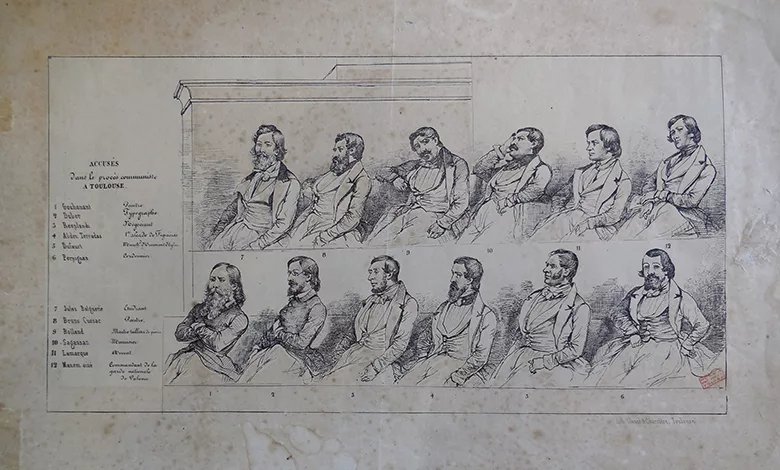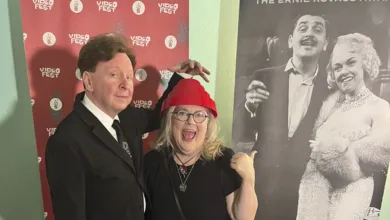The Adventures of Adolphe Gouhenant, From France to Dallas
A family story that turned into a book

Adolphe Gouhenant was a fascinating man, and I am proud to say he was my French ancestor.
I had wanted to write a book about him since my early 20s. It took a bit longer than I expected— I turned 58 when my book was published.
During my writing process, quite by accident, a French astrophysicist helped me connect the dots between Gouhenant’s French and American adventures. We collaborated on the research for six years, and our efforts resulted in the biography “Adolphe Gouhenant: French Revolutionary, Utopian Leader, Texas Frontier Photographer.”
It all started back in the 70s. My grandmother told me stories about my great-great-great-grandfather, Dallas’s first photographer and artist-in-residence. I used to sit on her screened porch on Belmont Avenue and watch her shell peas while she told me about Gouhenant. “He had a band and played seven musical instruments. He was an artist and spoke several languages.” Growing up, I began to dig deeper into my genealogy and learned that Grandfather Gouhenant was much more than a talented artist and musician.

He arrived in Texas in 1848, leading an advance guard of 169 men to start a Utopian community in North Texas, which eventually failed. His journey took him to Fort Worth, and he ultimately settled in Dallas, where he opened the town’s first art gallery on the courthouse square, known as the Arts Saloon. As a daguerreotypist, he photographed some of Dallas’s earliest citizens. He painted in oil and watercolor, made wine, collected fossils, and taught drawing, sewing, and music. State legislators and officers from Fort Worth attended dances at his saloon. A Sunday school was a tenant, and, on occasion, so was the District Court since the saloon was larger than the courthouse.
In 1853, Gouhenant became the first man to be naturalized in a Dallas court and soon became entangled in numerous court cases with established Dallas businesspeople. While visiting Fort Worth, several men conspired to sell his Arts Saloon out from under him. He took his battle to the Texas Supreme Court, where he not only won his case (Gouhenant vs. Cockrell), but the case became a precedent cited in homestead battles well into the 20th century.
The present-day French connection to Gouhenant started in 2012. I was sipping a margarita on the patio at Gloria’s one evening when I noticed an email from someone with a French name I did not recognize. I was about to delete it when I saw “Gouhenant” in the subject line. Opening that email was the beginning of a trans-continental collaboration.
Emmanuel Pécontal, who would become my co-author, was researching 19th-century astronomical history in Lyon. He discovered that Gouhenant had built a four-story observatory above the city in the 1830s.
Gouhenant’s monument to the arts and sciences was a labor of love. The building had carved wooden ornaments, marble countertops, a gallery for natural history, a restaurant, and space for art exhibitions. Gouhenant was a man of vision. Unfortunately, he was not a good manager. He solicited money from the Academy of Arts and Sciences and even the king. They both rejected his requests. So, he spent his wife’s dowry, took out multiple mortgages, and ultimately went bankrupt building the tower. After the bankruptcy, Gouhenant got involved in revolutionary activities. He was arrested and held in a Toulouse prison for six months on a conspiracy charge against the monarchy before being found innocent.
Gouhenant overcame numerous obstacles while pursuing his goals in both France and America. Each time, he bounced back, setting his sights higher and reinventing himself repeatedly.
Researching and writing about Gouhenant was one of the most rewarding experiences of my life. It did have its challenges. Navigating teleconferences with a 7-hour time difference and understanding the French-English idiomatic expressions with my co-author and publisher took work, and after a lengthy illness, my mother passed away, which was an emotional challenge.

Throughout my writing journey, I frequently focused on my grandfather’s nineteenth-century experiences, reminding me how fortunate I am to follow my dreams in his shadow.
To learn more about Adolphe Gouhenant visit: https://www.tshaonline.org/handbook/entries/gouhenant-francois-ignace-adolphe. To purchase the book, visit: https://untpress.unt.edu/catalog/selzer-adolphe-gouhenant/.





